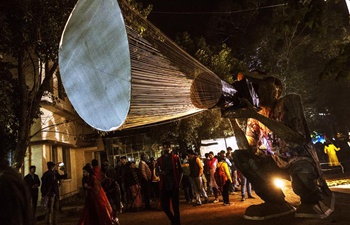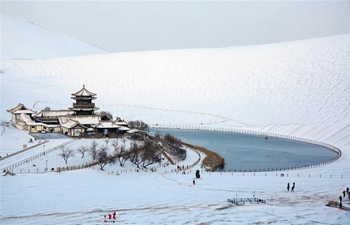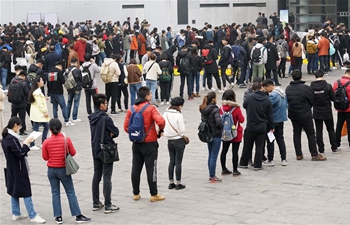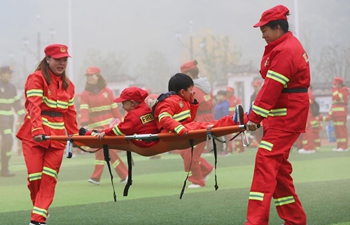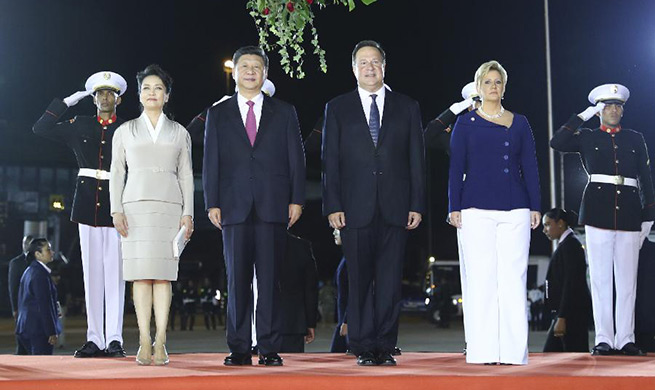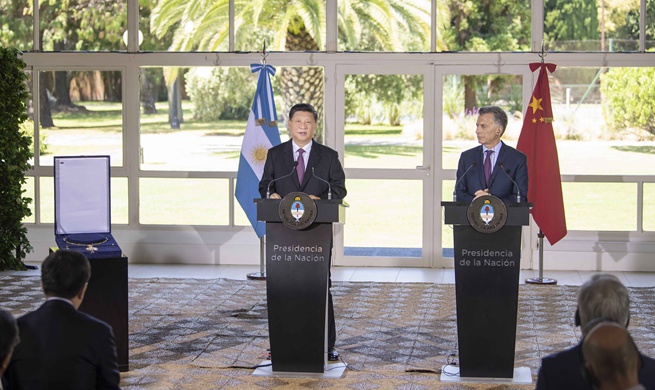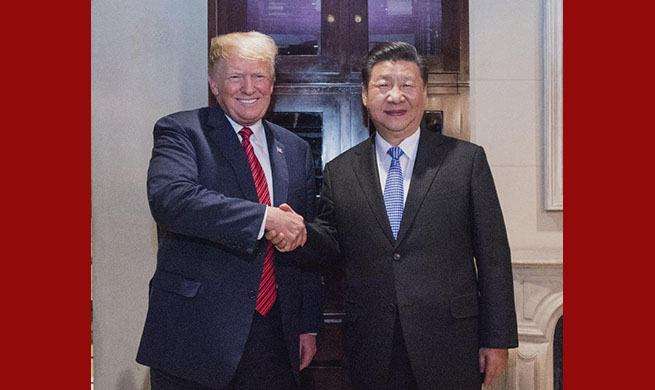MANILA, Dec. 3 (Xinhua) -- Philippine President Rodrigo Duterte is likely to extend martial law in the entire Mindanao island in the southern Philippines, his chief legal counsel said on Monday.
Philippine Chief Presidential Legal Counsel and Presidential Spokesperson Salvador Panelo said Duterte "may be persuaded to go on to approve the recommendation" of the Armed Forces of the Philippines (AFP) and the Philippine National Police (PNP) to place Mindanao under martial rule until Dec. 31, 2019.
In December last year, Duterte formally requested the Congress to extend the martial law in the entire Mindanao until Dec. 31, 2018 for the government to "quell completely" the threat of terrorism in the southern Philippine region.
Panelo said Duterte will consider the safety of the people in Mindanao in deciding whether to extend martial law for another year.
"If the threat remains and there is still an ongoing rebellion, then, constitutionally, the basis would be valid for the continuation of martial law," Panelo said in a news briefing at the presidential palace.
On Monday, AFP Chief of Staff Carlito Galvez said the AFP is strongly recommending the extension of martial law "so that we can substantially make a significant dent on terrorists."
"There is really a clamor for the extension considering the terrorists are still lurking in the area," Galvez told reporters, stressing the need "to constrict and limit the maneuver space of the terrorist to the maximum."
"We have a very weak terrorism law so martial law is needed to completely defeat terrorism," Galvez added.
Duterte declared on May 23, 2017 the whole Mindanao region under martial law after the ISIS-inspired Maute Group and Abu Sayyaf Group attacked Marawi City, sparking a bitter fighting that killed more than 1,200 people.
The Philippine Congress approved in December 2017 the one-year extension of martial law, which would expire on Dec. 31, 2018.
The Marawi conflict in May 2017 caused large numbers of people to flee, with at least 360,000 people displaced, their homes destroyed and no means of livelihood.
As of October 2018, the United Nations Office for the Coordination of Humanitarian Affairs in the Philippines said over 73,000 people remain displaced, a majority coming from Marawi City's most affected areas.
According to Philippine government projections, it will take three to five years to reconstruct this part of the city.
The Philippine Department of Social Welfare and Development estimates that over 230,000 people have so far returned to Marawi City in 72 villages that were partially damaged by the conflict.

